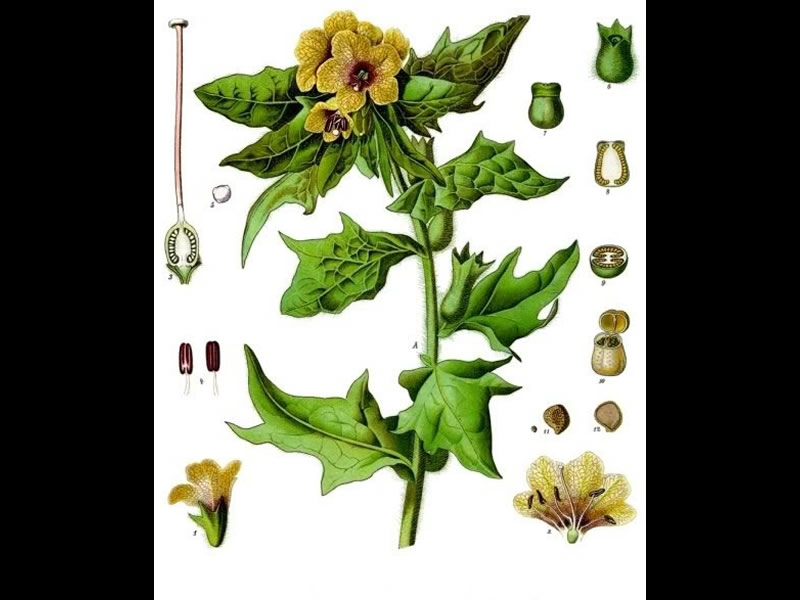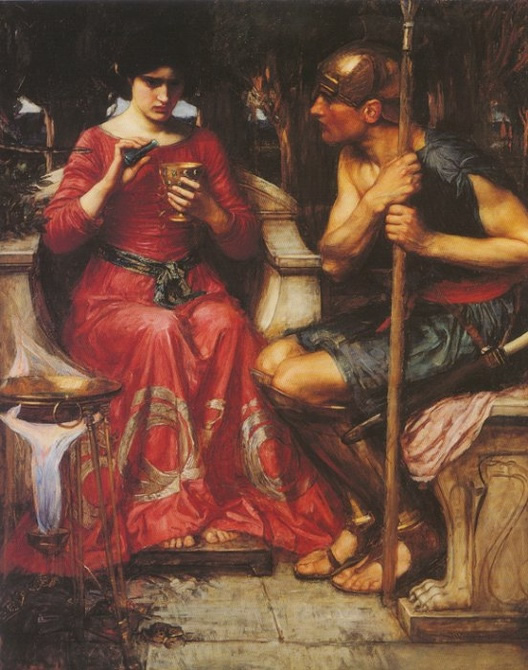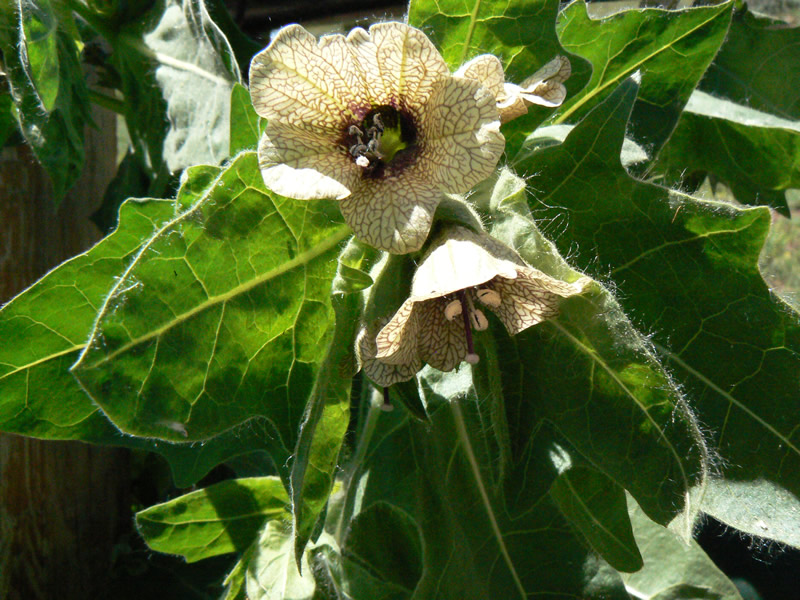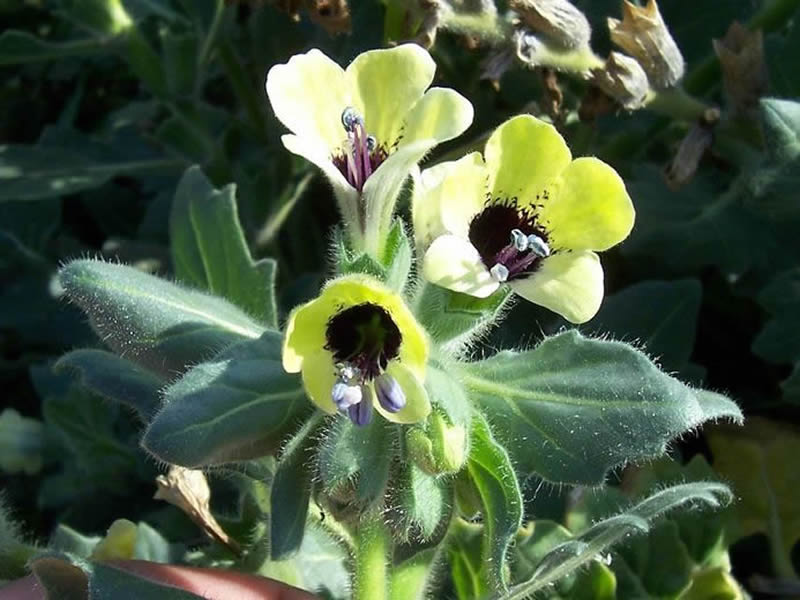The Powerful Solanaceae: Henbane

Henbane, Black Henbane, White Henbane, Devil’s eyes, Hogbean, stinking nightshade (Hyoscyamus spp.)
The history of henbane, similar to other highly poisonous and notorious members of this family such as mandrakes and daturas, can be traced back to at least 4,000 B.C., throughout southern and central Europe and Eurasia. The genus Hyoscyamus consists of about 20 species and all of them contain powerful narcotic tropane alkaloids, including scopolamine and hyoscyamine. The physical and psychological reaction to henbane was similar to other members of the Solanaceae containing stramonium and belladonna alkaloids: loss of muscular control, dilation of the pupils, heart palpitation, hallucinations, delirium (“madness”) and in large doses, coma, and death. The most commonly used magical and medicinal species in Europe were Hyoscyamus niger (black henbane) and H. albus (yellow or white henbane).
Black henbane (Hyoscyamus niger) has a long history as a notorious toxic as well as a beneficial medicinal plant. The pale yellow, bell-shaped flowers with purple veins are a diagnostic feature of this species. The plants grow up to 36 inches tall and have hairy leaves that are sticky to the touch. Black henbane is highly poisonous and should not be carelessly used, even by herbalists.
 Black henbane (Hyoscyamus niger) has a long history as a notorious toxic as well as a beneficial medicinal plant.
Black henbane (Hyoscyamus niger) has a long history as a notorious toxic as well as a beneficial medicinal plant.
Yellow or white henbane has long been used in southern and central Europe. In ancient Greece, it was considered a sacred “plant of Apollo.” Henbane was mixed with other herbs and used ritualistically to induce a hallucinatory or trance-like state of “madness” to commune with the divine.
Henbane was one of the most important analgesic medicines of antiquity. It was used as a sedating and calming agent as well as treatment for various forms of madness (mania). In the ancient world, the term “madness” was considered any kind of alteration of consciousness (not the pathological state we think of in the modern context). Madness was thought to be divinely inspired by Dionysus, the Muses, and Aphrodite (love), the best kind of madness. Divine madness was a trance-like state that opened the individual to a clairvoyant or sacred consciousness, induced by a powerful plant such as henbane.
During the Middle Ages, henbane was known as “Witches Herb,” one of the major ingredients used in an ointment that gave the hallucinatory sensation of flying. This gave rise to the witch on a broomstick archetype that lasts to this day. Henbane induced a sense of body suspension and flight, but on the next day, the person would remember nothing of what had happened.
In northern Europe, henbane was renowned as a beer additive, used as a flavor enhancer before the adoption of hops beers. One of the side effects of beer brewed with henbane is that it actually makes a person thirstier the more he drinks! High doses of henbane can cause delirium, seizures, irregular heartbeat, and a painful death.
Did You Know?
- The Greeks and Gauls poisoned their arrows and javelins with a decoction of henbane.
- Henbane was used to treat earaches, rheumatism, sciatica, and insomnia until relatively recently.
- Henbane was one of the most important ritual plants of Druids and the Vikings. Viking graves have yielded hundreds of seeds.
- Henbane is the most common plant on the Western Wall in Jerusalem.
- In some parts of the world, henbane is still used medicinally to treat toothache, asthma, and nervous diseases.
- Hyoscyamine is still used in modern medicine as an antispasmodic and to treat stomach and intestinal such as irritable bowel syndrome, cramps, and Parkinson’s disease.
- Hamlet's uncle Claudius poured a henbane tincture of the “cursed hebenon” into Hamlet's father's ear to murder him.
- Black henbane is a widespread, noxious weed in many parts of the United States
 Medea preparing a potion containing henbane to render Jason impervious to pain in his quest for the Golden Fleece. From a painting by John William Waterhouse.
Medea preparing a potion containing henbane to render Jason impervious to pain in his quest for the Golden Fleece. From a painting by John William Waterhouse.
 This drawing from a medieval Herbal illustrates the diabolical nature of the henbane plant purportedly used by witches and necromancers to enable them to fly through the air. Photo: Wellcome Library, London.
This drawing from a medieval Herbal illustrates the diabolical nature of the henbane plant purportedly used by witches and necromancers to enable them to fly through the air. Photo: Wellcome Library, London.



